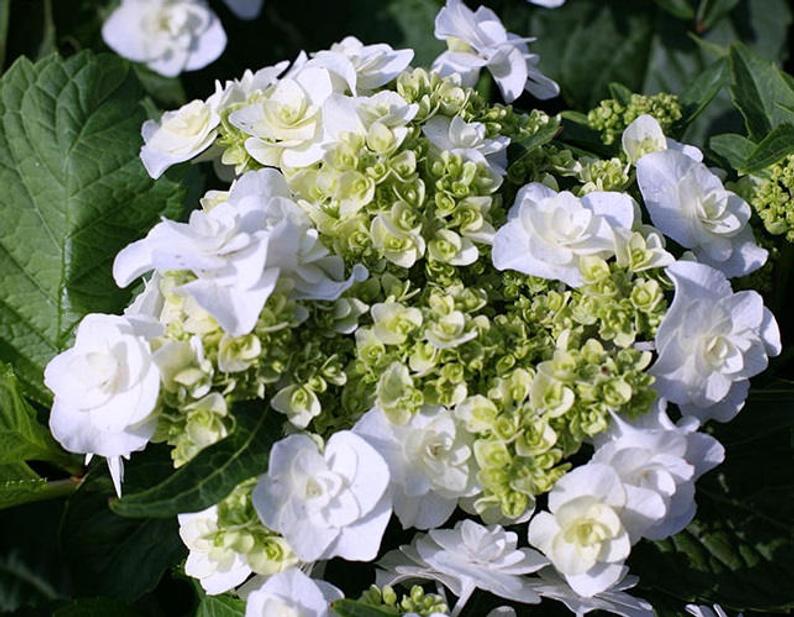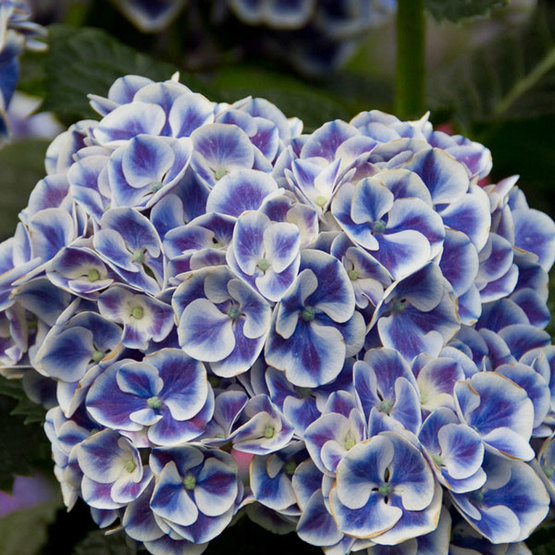Gardening near the ocean has its challenges, but fortunately there are many varieties of hydrangea that perform well in the coastal environment. One of the biggest issues for hydrangeas are hot, dry summers, but this is rarely an issue on the Northern Oregon Coast. Unlike in the Willamette Valley, coastal hydrangeas often appreciate being sited in full sun, where, with adequate water and composted soil, they will bloom profusely.
The mophead hydrangea (H. macrophylla) is considered the modern classic hydrangea with its bold, green foliage and even bolder blooms. These hydrangeas are found in hues of pink, purple, blue, and white, but most will change color over time due to soil pH. Even the boldest pink or blue mopheads can eventually fade to a soft purple due to our acidic Pacific Northwest soils. Maintaining or changing the flower color is a matter of two things; Firstly, being certain that you have a variety that will respond to the attempt, and secondly, changing the soil pH through the use of lime (to lessen acidity for more pink hues) or elemental sulfur (to increase the acidity for more true blue hues). In both cases, changing soil acidity takes time and is not permanent, so you must be patient and persistent.
Love hydrangeas but changing soil’s pH isn’t up your alley? Oakleaf Hydrangeas (H. quercifolia) are another beautiful addition to the coastal garden. Generally white-flowered, Oakleaf Hydrangeas boast remarkable fall colors from gold to red to purple. The colorful leaves remain looking lovely and provide interest well into the colder months. On the Oregon Coast, plant Oakleaf Hydrangeas in full sun and add compost to help retain moisture.
Oakleaf
Fall color, interesting foliage
If you’re a fan of the unusual, there are plenty of new and exciting hydrangea varieties popping up every year. ‘Wedding Gown’ is a stunning white lacecap with double blooming flowers that look like a wedding bouquet in and of themselves. ‘Miss Saori’ is another double-bloomer with unique pink and white variegated petals that contrast beautifully with its dark foliage.
‘Wedding Gown’
Each flower it’s own bridal bouquet
‘Miss Saori’
Chelsea flower show medalist—amazing!
Small garden? The Cityline Series boasts a number of dwarf cultivars including ‘Pia’, ‘Vienna’, and ‘Rio’. These shrubs should stay around 3’ x 3’ and remain dense, so they don’t require the pruning that some other varieties do.
Speaking of pruning, beginning and experienced gardeners alike can make mistakes when pruning hydrangeas. Depending on variety, hydrangeas bloom on different ages of wood, referred to as “new” or “old” wood. This simply means that the flower buds are found on either last year’s stems (old wood), or on this years stems (new wood). This means that if you significantly cut back a hydrangea that blooms on old wood, like H. macrophylla or H. quercifolia, you may be inadvertently cutting of many of the dormant flower buds, sacrificing the coming bloom. The simplest approach? Cut off spent flower stems only as far back as the first set of leaves. This will guarantee that immature flower buds remain. If you find that your hydrangea is getting too large for its space and needs to be re-shaped, go ahead and cut it back by up to one-third in the fall. You will likely sacrifice the blooms for the coming year on some varieties, but the plant will be better for it in the long run.
Cityline ‘Vienna’
Check out cityline series for more compact shrubs
Cityline ‘Mars’
Compact and “Otherwordly”
If you think you’re prone to worrying about pruning, consider the ‘Endless Summer’ varieties, which bloom on both new AND old wood, or choose a dwarf variety that won’t ever require significant pruning.






